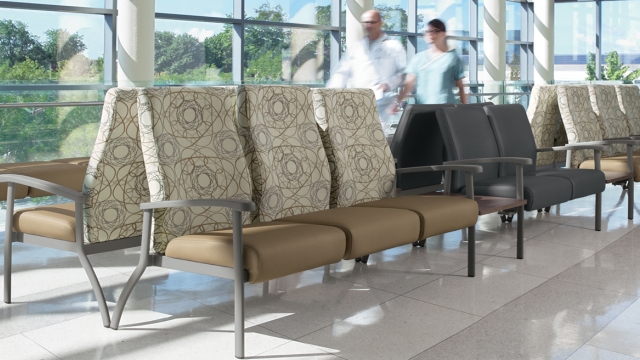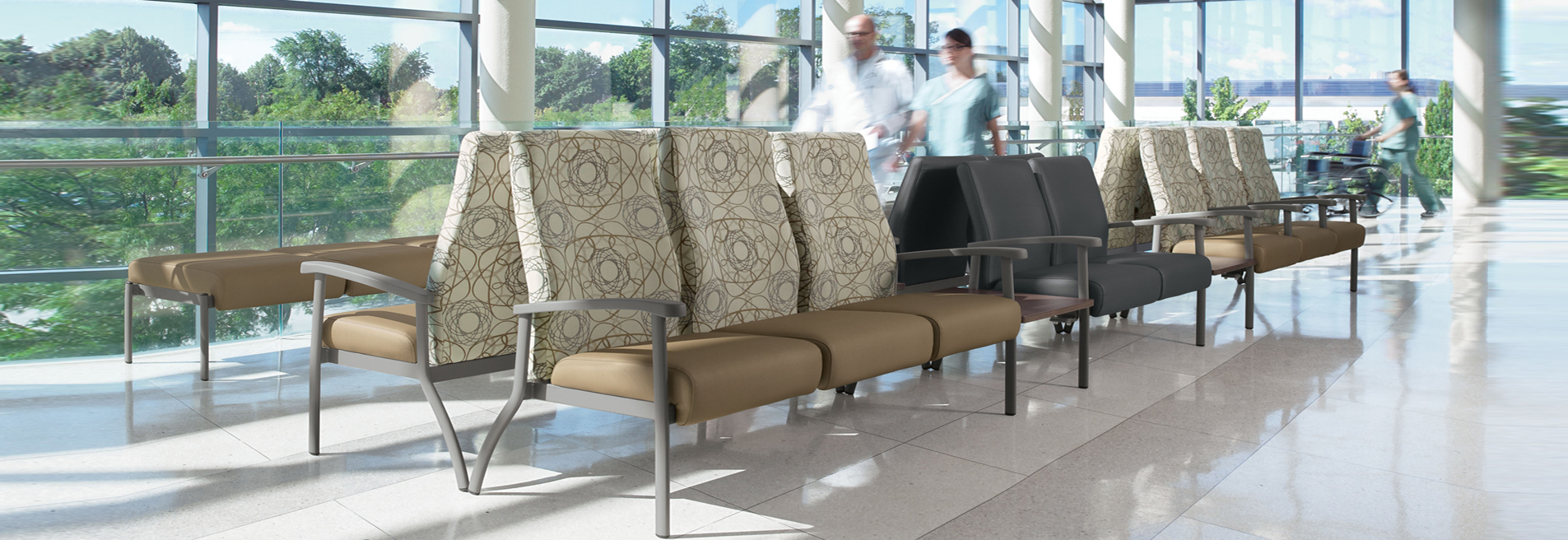
Revamping Your Healthcare Space: Innovations in Healthcare Furniture
Ryan Flores -When it comes to revamping healthcare spaces, one vital aspect that often goes overlooked is healthcare furniture. The furniture chosen for healthcare facilities plays a significant role in ensuring the comfort, safety, and overall well-being of patients, visitors, and medical professionals alike. It is no longer just about functionality; innovative designs and materials are now being integrated to create a more welcoming and healing environment. In this article, we will explore some of the latest trends and innovations in healthcare furniture, and how they are transforming healthcare spaces into more efficient and patient-centric settings. So, whether you are in the process of designing a new healthcare facility or considering an upgrade, read on to discover how the right furniture can positively impact the overall healthcare experience.
Ergonomic Design for Patient Comfort
Healthcare furniture plays a pivotal role in creating a comfortable and healing environment for patients. With advancements in design and technology, innovative healthcare furniture solutions are now focusing on ergonomic design principles to enhance patient comfort. By carefully considering the physical and psychological needs of patients, these designs aim to improve their overall well-being and aid in their recovery journey.
One key aspect of ergonomic healthcare furniture is adjustability. Chairs, beds, and other furniture pieces that can be easily adjusted to accommodate different body types and positions can greatly enhance patient comfort. This flexibility allows healthcare professionals to customize the furniture according to individual needs, ensuring optimal support and reducing the chances of discomfort or pain arising from prolonged sitting or lying positions.
In addition to adjustability, ergonomic healthcare furniture also prioritizes proper body alignment. By incorporating features such as lumbar support, ergonomic chairs promote healthy posture and reduce strain on the back and neck. Similarly, beds with adjustable inclines or supports can alleviate pressure points and provide relief for patients with chronic conditions or recovering from surgeries.
Another important aspect of ergonomic design in healthcare furniture is the use of comfortable materials. Furniture upholstered with soft and hypoallergenic fabrics not only enhances patient comfort but also helps in maintaining a clean and hygienic environment. Easy-to-clean surfaces, anti-microbial coatings, and materials that minimize noise and vibrations contribute to a positive patient experience and promote overall well-being.
In summary, the integration of ergonomic principles in healthcare furniture design is revolutionizing the patient experience. Through adjustability, proper body alignment, and the use of comfortable materials, healthcare spaces can be transformed into havens that promote healing, comfort, and well-being for patients.
2. Technology Integration in Healthcare Furniture
Advancements in technology have greatly influenced the design and functionality of healthcare furniture. Innovations in healthcare furniture have revolutionized patient care, making it more efficient and comfortable.
One of the key aspects of technology integration in healthcare furniture is the incorporation of electronic systems. These systems allow for patient monitoring, data collection, and seamless communication between healthcare professionals. For instance, hospital beds equipped with sensors can track vital signs and alert medical staff in case of emergencies. This integration of technology not only enhances patient safety but also enables healthcare providers to deliver prompt and personalized care.
Additionally, technology has enabled the development of ergonomic features in healthcare furniture. Adjustable chairs and beds with customizable settings provide optimal comfort for patients, reducing the risk of pressure sores and discomfort during prolonged periods of use. Height-adjustable desks and tables ensure ergonomic positioning for healthcare professionals, promoting better posture and minimizing strain.
Another noteworthy innovation is the integration of smart features in healthcare furniture. This includes features such as built-in touch panels for easy control of lighting, temperature, and entertainment options. Patients can adjust their immediate environment to suit their preferences, fostering a more relaxing and personalized experience.
In conclusion, the integration of technology in healthcare furniture has brought about significant improvements to patient care. From electronic systems for monitoring and communication to ergonomic designs and smart features, these innovations have transformed healthcare spaces into more efficient and patient-centric environments.
3. Sustainable Materials and Practices in Healthcare Furniture
In recent years, the healthcare industry has been increasingly focused on sustainability and environmental responsibility. This shift in mindset has spilled over into the realm of healthcare furniture as well. Manufacturers and designers are now exploring innovative ways to incorporate sustainable materials and practices into the creation of healthcare furniture.
One key aspect of sustainable healthcare furniture is the use of eco-friendly materials. Instead of relying on traditional materials like wood and plastic, manufacturers are now turning to alternatives such as recycled materials, bamboo, and cork. These materials not only reduce the demand for new resources but also minimize the carbon footprint associated with manufacturing and transport.
In addition to using sustainable materials, healthcare furniture designers are also implementing practices that prioritize longevity and durability. By creating furniture that is built to last, healthcare facilities can minimize the need for frequent replacements, thereby reducing waste. Furthermore, efforts are being made to design furniture that is easy to disassemble and recycle at the end of its lifespan, ensuring a closed-loop system.
Moreover, sustainable healthcare furniture is not just limited to its materials and production processes. There is also a growing emphasis on incorporating energy-saving features into healthcare furniture designs. For example, some furniture pieces are now equipped with motion-sensor lighting systems or smart technology that automatically adjusts settings to conserve energy. These initiatives not only benefit the environment but also contribute to cost-saving measures for healthcare facilities.
By embracing sustainable materials and practices, healthcare furniture manufacturers and designers are playing a vital role in shaping a greener and more responsible future. The integration of eco-friendly materials, durable designs, and energy-saving features in healthcare furniture not only benefits the environment but also promotes a healthier and more sustainable healthcare space.

You may also like
Archives
- December 2025
- November 2025
- October 2025
- September 2025
- August 2025
- July 2025
- June 2025
- May 2025
- April 2025
- March 2025
- February 2025
- January 2025
- December 2024
- March 2024
- February 2024
- January 2024
- December 2023
- November 2023
- October 2023
- September 2023
- August 2023
- July 2023
- June 2023
- May 2023
- April 2023
- March 2023
- February 2023
- January 2023
- December 2022
- November 2022
- October 2022
- September 2022
- August 2022
- July 2022
- June 2022
- May 2022
- April 2022
- March 2022
- February 2022
- January 2022